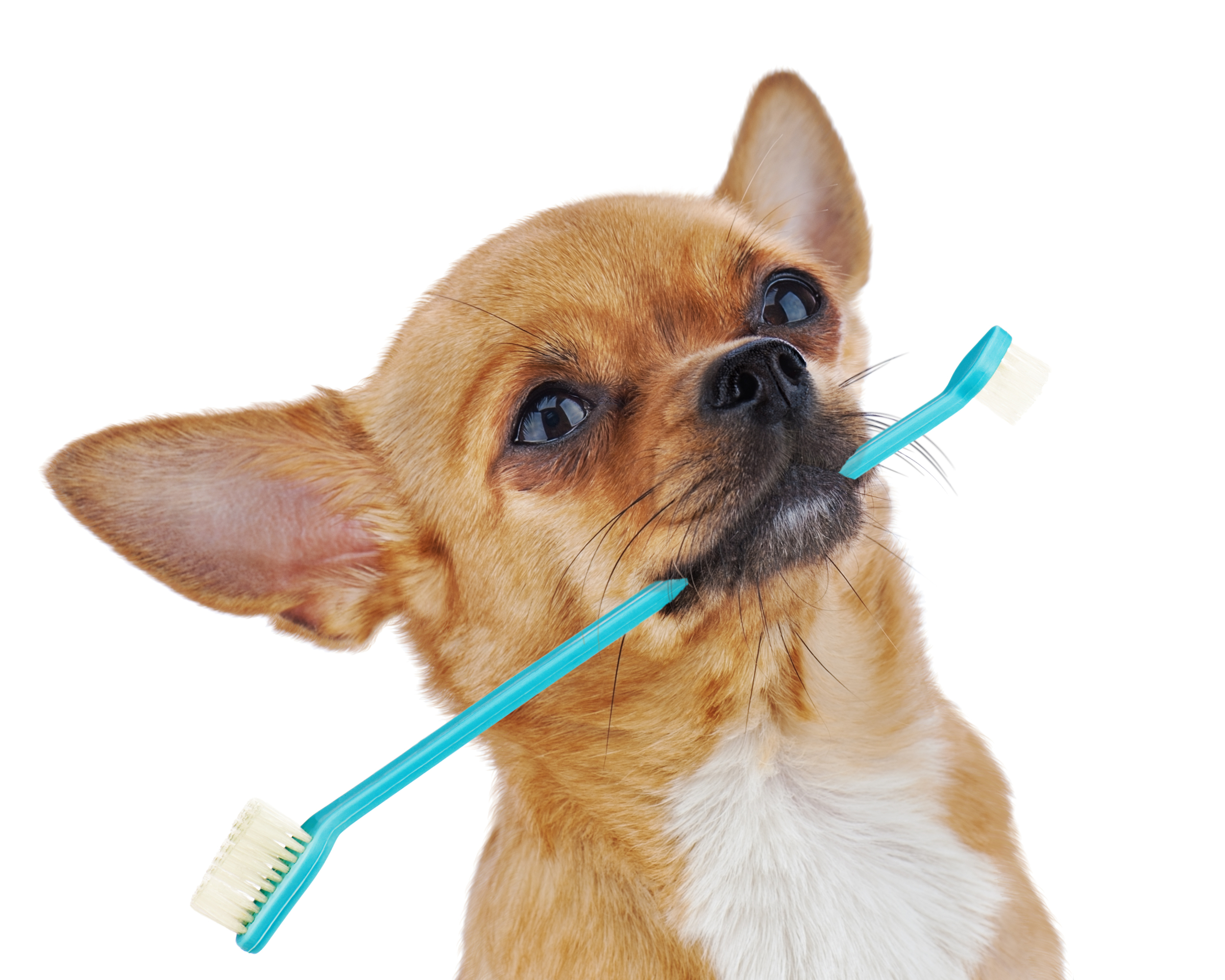
the scientific study of pet nutrition by veterinary nutrition specialists and experts.
What are the best foods and treats for my pet’s dental health?

There are a lot of products out there that claim to help clean and freshen pets’ teeth, but how do you know which ones are safe and actually work? There are two groups that are involved in pet foods and treats with dental claims: one with regulatory impact and one voluntary organization. Let’s go over them both:
Association of American Feed Control Officials (AAFCO)
AAFCO (www.aafco.org) is a ‘voluntary membership association of local, state and federal agencies charged by law to regulate the sale and distribution of animal feeds and animal drug remedies.’ AAFCO provides guidelines that states can then adopt into law as they see fit to regulate pet food in each state. It is important to note that AAFCO does not enforce laws and they are not regulatory themselves, but provide a great impact on regulations that states may adopt. AAFCO provides the nutrient profiles that determine if a pet food is complete and balanced for each lifestage (e.g., adult, growth), and also provides definitions for ingredients.
In general, any product that has a drug claim (e.g., claiming to prevent, treat, or cure a condition) is required to have approval from the Food and Drug Administration (FDA). This means your veterinarian would prescribe it to you just like any other medication and your veterinarian will help decide if that product is right for you.
For commercially available products marketed for pets’ dental health to the general public, AAFCO has a couple rules:
- ‘Foods and treats bearing claims to whiten or cleanse/freshen teeth by abrasive or mechanical actions are not objectionable,’ but ‘foods and treats implying drug claims or any mechanism other than mechanical must have FDA approval.’
- This means that companies can make products without proof that they help, as they claim to help by chewing instead of using a chemical to clean teeth (like an enzyme, for example). This refers to the minor dental benefit that pets get just from chewing any dry treat or kibble. However, if a company makes any other claims, they would need FDA approval just like any prescription medication.
- ‘Must be safe (GRAS)’.
- GRAS is defined as ‘Generally Regarded as Safe’ by the FDA, where they decide a product can be on this ‘safe’ list if it’s been used commonly in foods by a lot of consumers for some time. (Sounds pretty vague, and it is!)
In summary, AAFCO provides only a little guidance on how foods can be labeled and marketed for dental health, and it doesn’t really cover whether products help pets.
Veterinary Oral Health Council (VOHC)
VOHC was founded by a panel of veterinary dentists, dental scientists, and experts from groups such as the American Dental Association, the American Veterinary Medical Association, and the American Animal Hospital Association. According to their website (www.vohc.org), VOHC ‘recognizes products that meet pre-set standards of plaque and calculus (tartar) retardation in dogs and cats.’ Products that meet these standards are allowed to have a VOHC ‘seal of acceptance’ after VOHC approves their trials and data. It’s important to note that the VOHC does not do the testing themselves, but they have protocols for trials. Companies can then choose to conduct the trials and apply for the VOHC seal of acceptance.
In order to receive the seal, companies must have results from two tests of healthy pets using the product in the way it is marketed to be used (e.g., daily, twice daily, etc.). There are strict rules for how they test these products and they have to show at least 15% difference after using the product. Safety is not specifically tested in the protocol, but VOHC seal of acceptance requires annual checks that there is no information at the time that the product is unsafe. Of note, however, is that VOHC has nothing to do with nutrient profile of foods and treats, so work with your veterinarian to choose the best product for your pet. This is especially important if your pet has any medical conditions or special nutrition needs.
Take Home Points
AAFCO guidelines do not provide much help in selecting dental health products. However, the VOHC seal of acceptance on a product means it has been tested and has no known side effects. There are a variety of foods, treats, and products that have been awarded the VOHC seal to date (see www.vohc.org for the most recent list). While studies have shown that brushing pet’s teeth is still the best way to keep cats’ and dogs’ teeth and gums healthy, some dental products can be used for extra help.
Dental health resources
Association of American Feed Control Officials (AAFCO) Website: www.aafco.org [Note that the full AAFCO guidelines are available online for a fee.]
Food and Drug Administration (FDA) Website on GRAS information: www.fda.gov/Food/IngredientsPackagingLabeling/GRAS/
Veterinary Oral Health Council Website: www.vohc.org
2013 American Animal Hospital Association Dental Care Guidelines for Dogs and Cats: www.aaha.org/public_documents/professional/guidelines/dental_guidelines.pdf
American Veterinary Dental College Website: www.avdc.org/
Want to read more information on feeding your pet?
Subscribe to always know when we add new material!
Recommended Posts

Can Diet Help With My Dog’s Seizures?
January 18, 2024

The Most Popular Holiday Foods…That Your Pet Should Avoid!
December 08, 2023

Veterinarian Recommended Pet Foods: What You Need to Know
November 05, 2023

